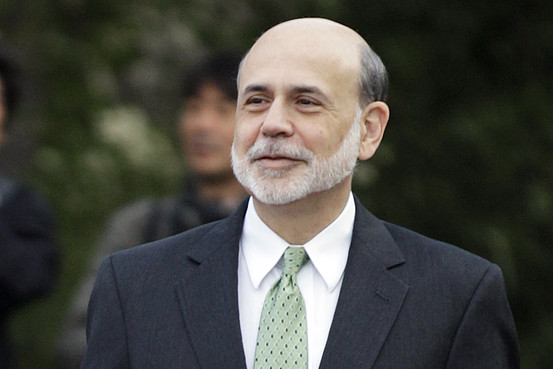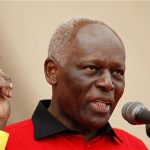Federal Reserve Chairman Ben Bernanke on Friday said the U.S. economy faced “daunting” challenges and that progress reducing unemployment had been too slow, but he stopped short of providing a clear signal of further monetary policy easing.

Bernanke said the central bank would act as needed to strengthen the recovery but he also said it had to weigh the costs as well as the benefits of more monetary stimulus, although he hinted the costs may be worthwhile. “As we assess the benefits and costs of alternative policy approaches … we must not lose sight of the daunting economic challenges that confront our nation,” Bernanke said at the Kansas City Fed’s annual Jackson Hole symposium. “Taking due account of the uncertainties and limits of its policy tools, the Federal Reserve will provide additional policy accommodation as needed to promote a stronger economic recovery and sustained improvement in labor market conditions in a context of price stability.” That was a somewhat weaker hint of policy easing than the minutes of the Fed’s last policy meeting had delivered, but it was enough to keep alive hopes in financial markets that the U.S. central bank would soon launch another round of bond purchases to push borrowing costs lower. The lack of a clear signal of policy action led markets to see-saw in the wake of Bernanke’s comments, but in the end his emphasis on the travails of the struggling U.S. labor market helped U.S. stocks extend gains.
Yields on U.S. government bonds dropped and the U.S. dollar declined against the euro. “The stagnation of the labor market in particular is a grave concern not only because of the enormous suffering and waste of human talent it entails, but also because persistently high levels of unemployment will wreak structural damage on our economy that could last for many years,” Bernanke said. In response to the financial crisis and recession of 2007-2009, the Fed cut overnight interest rates to near zero and bought $2.3 trillion in government and mortgage securities in two separate rounds of so-called quantitative easing.
It next meets on September 12-13, and policymakers have been locked in debate over whether further bond purchases are warranted to spur a stronger recovery. Economists said Bernanke’s emphasis on the health of the job market throws an especially strong spotlight on a report due on September 7 on job growth in August. Hiring picked up in July but the jobless rate moved up to 8.3 percent. “Bernanke fell short of providing any explicit green light to further asset purchases at the September meeting, but his remarks reinforce the dovish bias arising from the minutes of the July meeting,” said Millan Mulraine, an economist at TD Securities in New York. “The burden of proof remains squarely on the data … to dissuade the Fed from taking further action,” Mulraine said. DOWNPLAYS RISKS OF UNCONVENTIONAL POLICIES The Fed’s aggressive efforts to prop up the economy have drawn criticism from Republican politicians for potentially sowing the seeds for inflation and asset bubbles. Republican presidential hopeful Mitt Romney has said he does not think a third round of quantitative easing, or QE3 in market parlance, would help the economy, and some analysts think the central bank may be hesitant to act ahead of the November 6 presidential election. After September, the Fed has one more policy meeting in late October before Americans go to the polls. Bernanke, however, downplayed the potential risks from the Fed’s unconventional policies and argued that the asset purchases had been quite effective at boosting economic growth. “The costs of nontraditional policies, when considered carefully, appear manageable, implying that we should not rule out the further use of such policies if economic conditions warrant,” he said.
The economy emerged from recession nearly three years ago, but growth has remained tepid. U.S. gross domestic product grew at a 1.7 percent annual rate in the second quarter, too weak to bring down the nation’s elevated unemployment rate of 8.3 pct. “Unless the economy begins to grow more quickly than it has recently, the unemployment rate is likely to remain far above levels consistent with maximum sustainable employment,” Bernanke said. The Fed is charged with pursuing both price stability and full employment. Economic data has improved since the Fed’s July 31-August 1 meeting, which came before a stronger-than-expected reading for July employment. Reports on retail sales, exports and housing have also been relatively solid. A report on Friday showed U.S. consumer sentiment hit a three-month high in August, although pessimism on the future remained.
The economy’s generally better tone has led some market participants to dial back their expectations of a fresh round of Fed bond purchases in September, with analysts closely divided over the prospects for action. As an alternative, many economists say, the Fed may simply push further into the future the date it thinks it will finally start to move interest rates higher. The central bank has said since January that it expects to keep rates near zero at least through late 2014.





